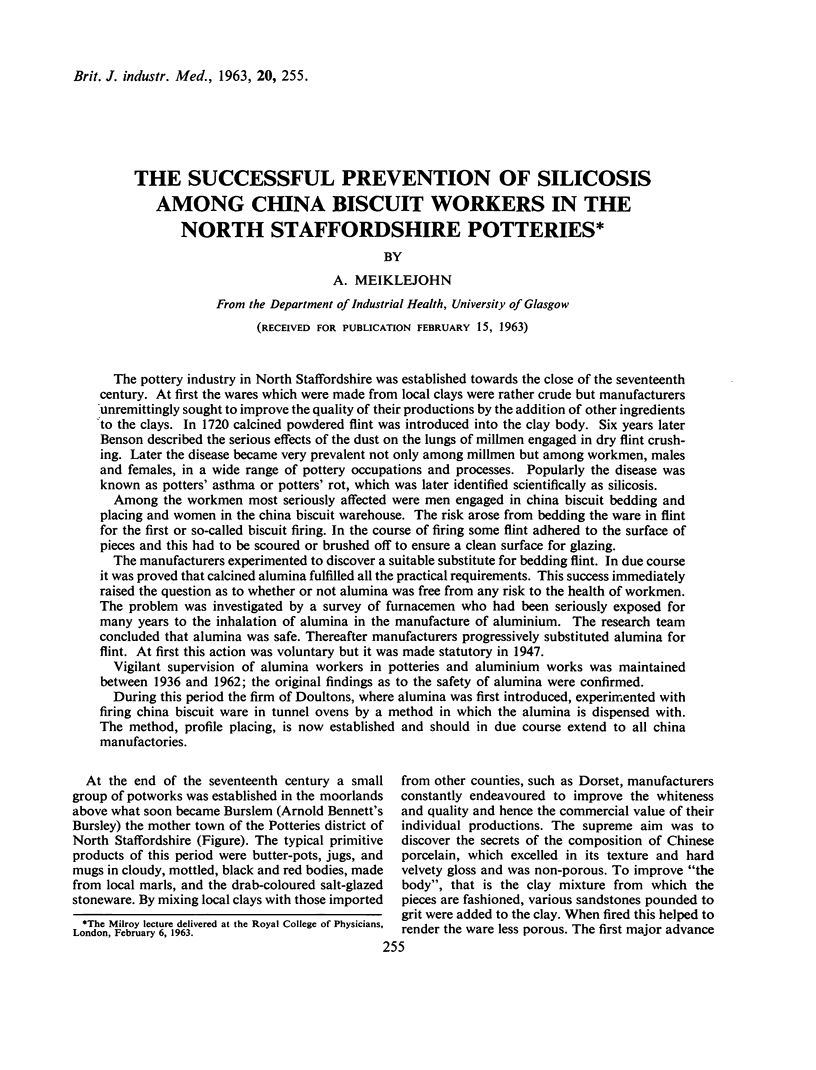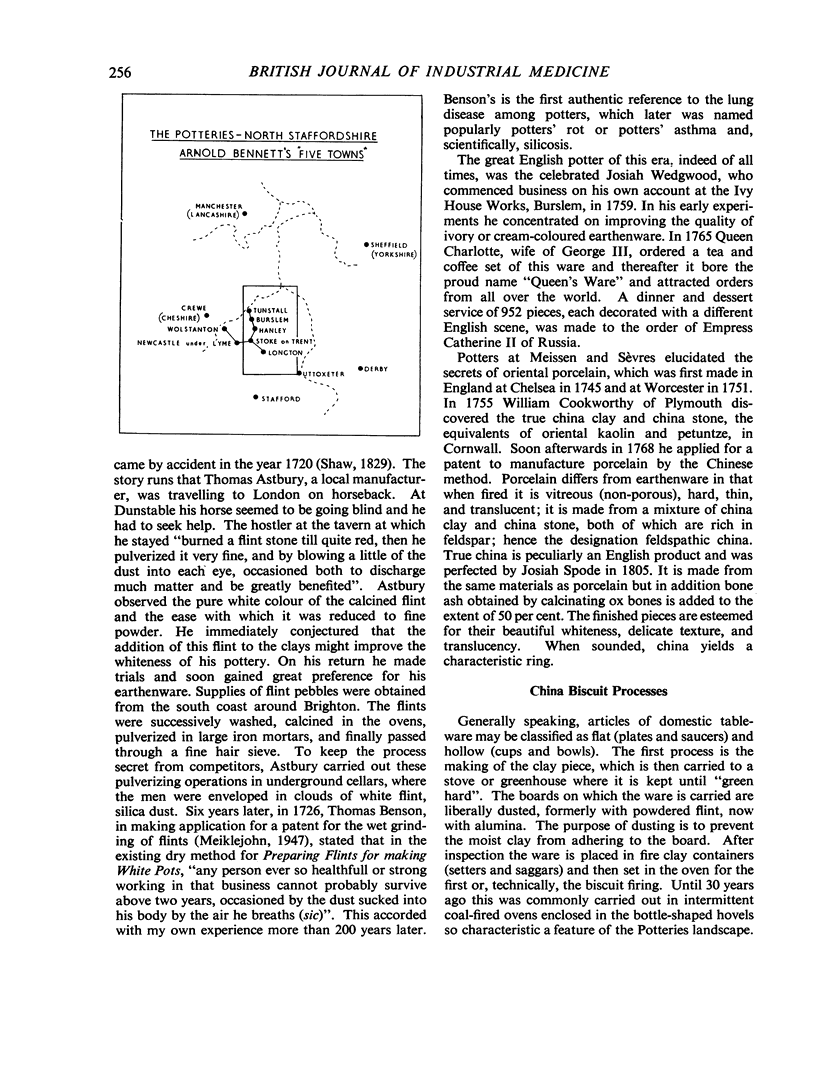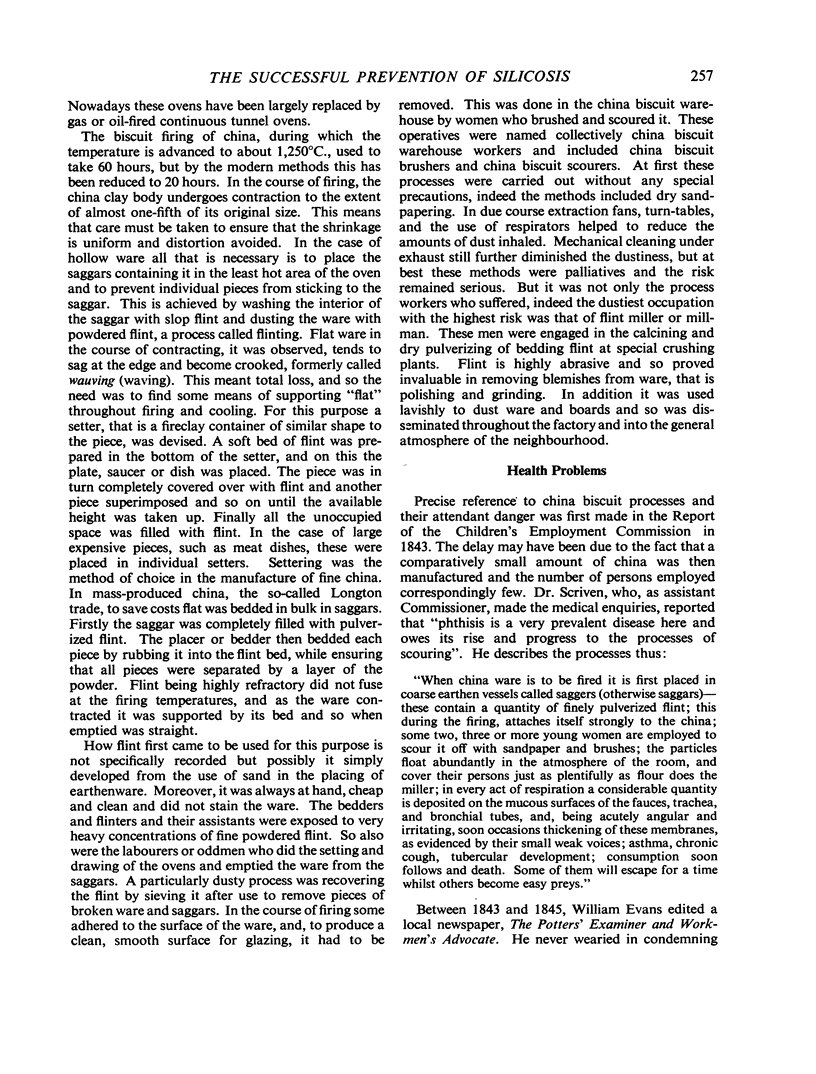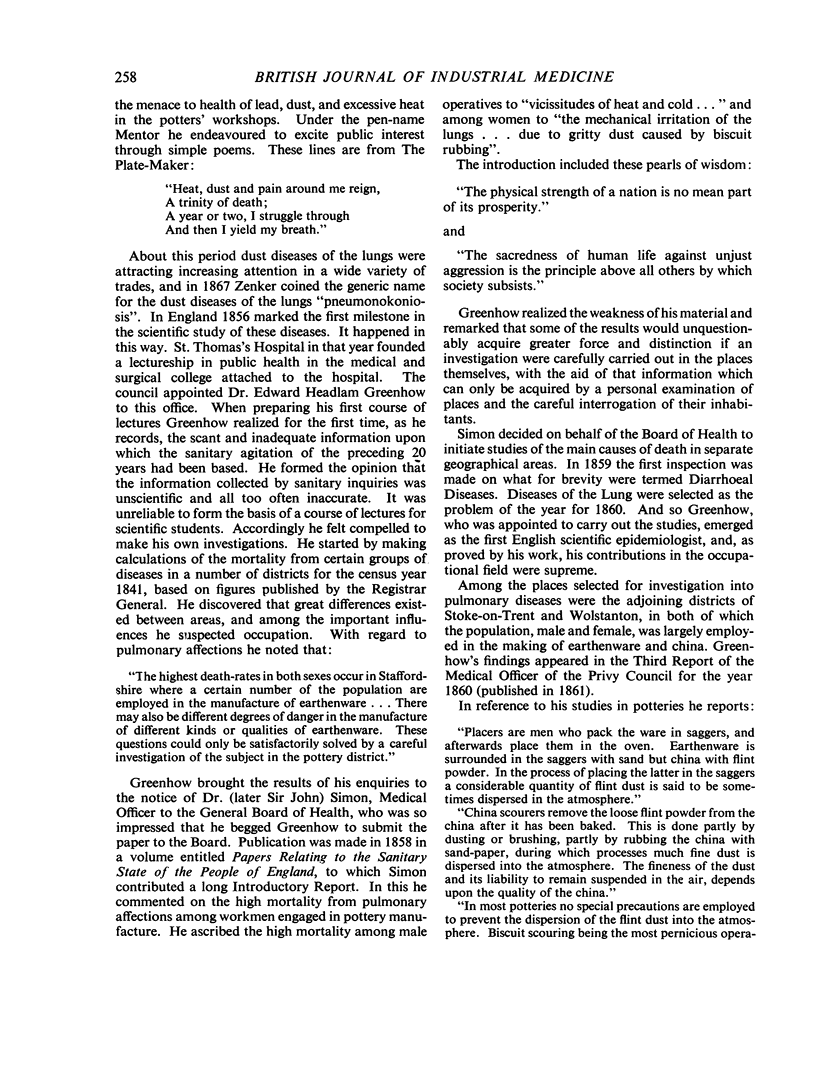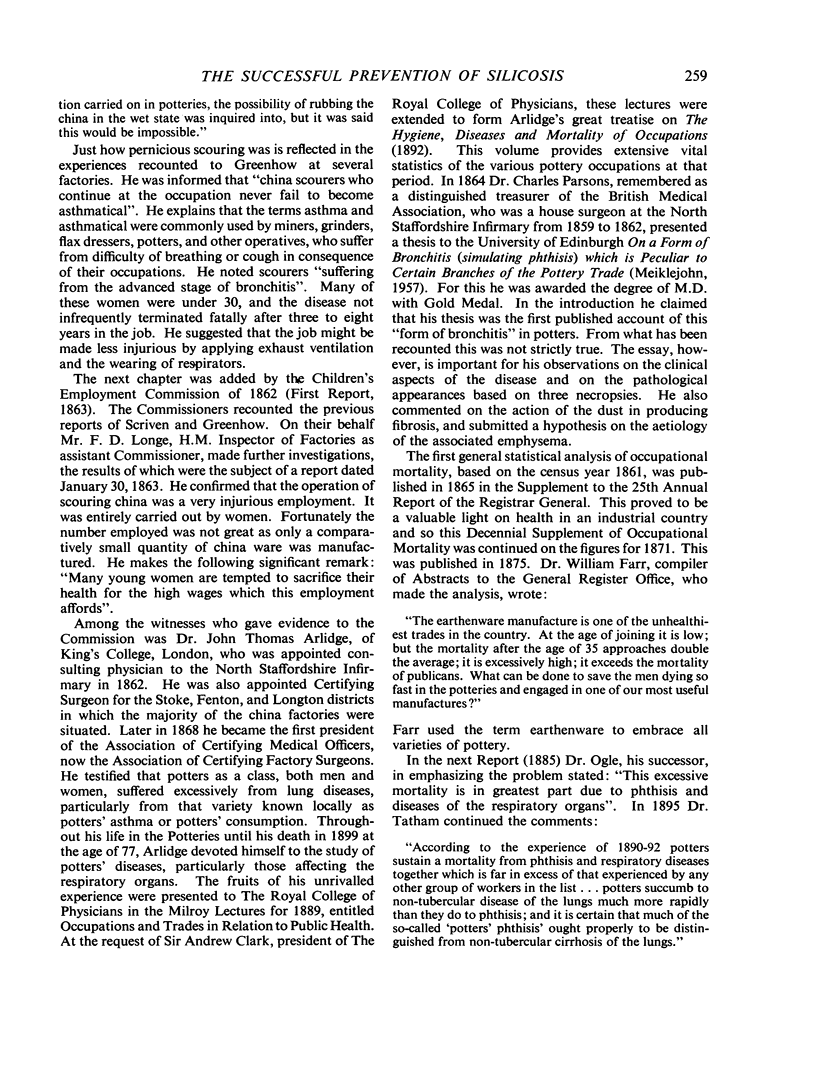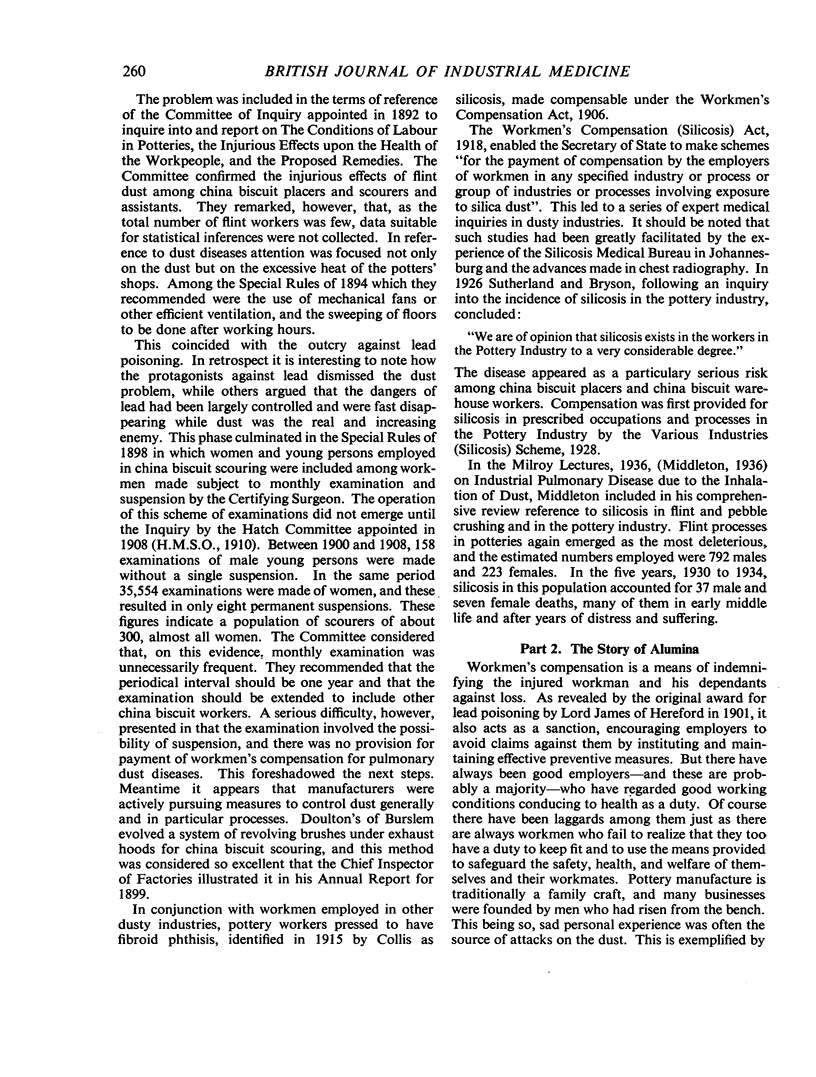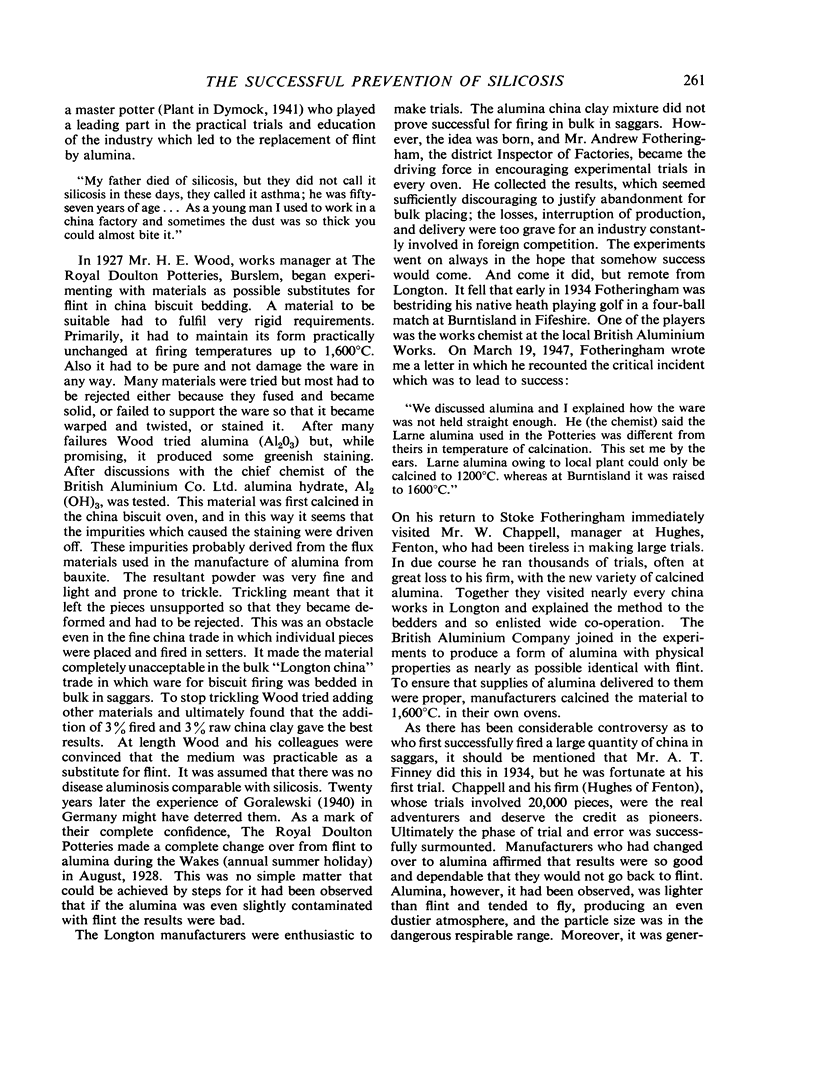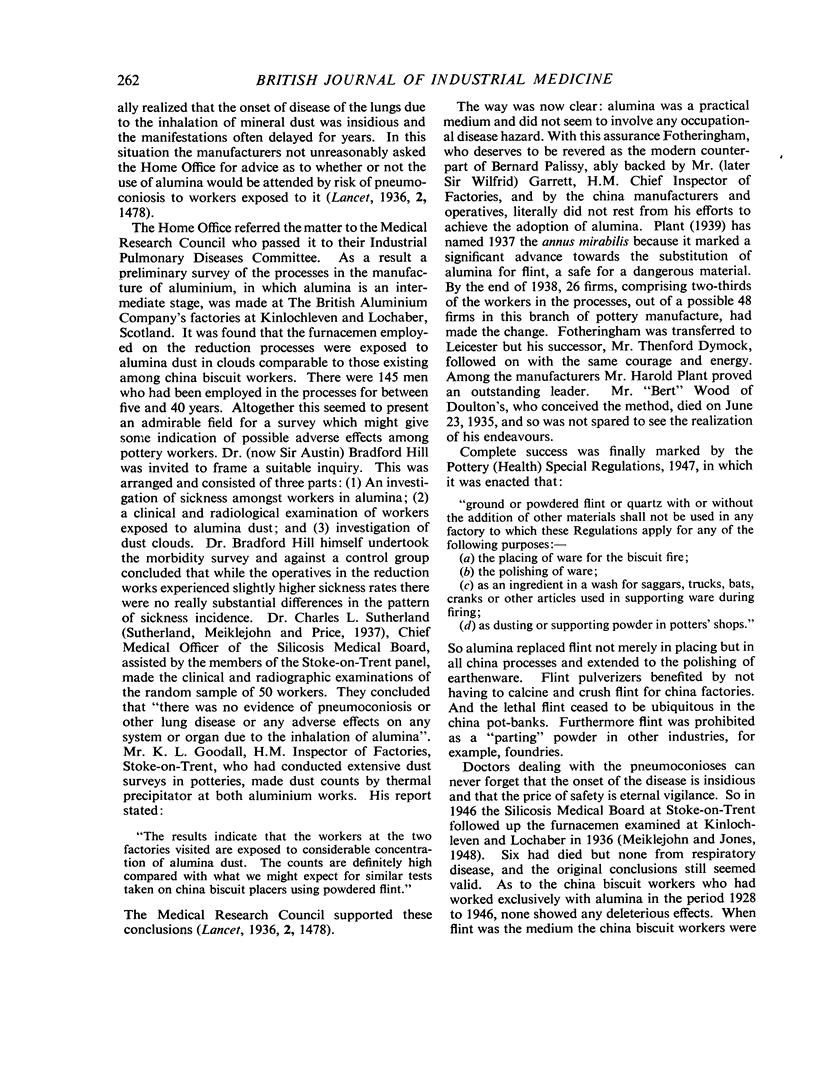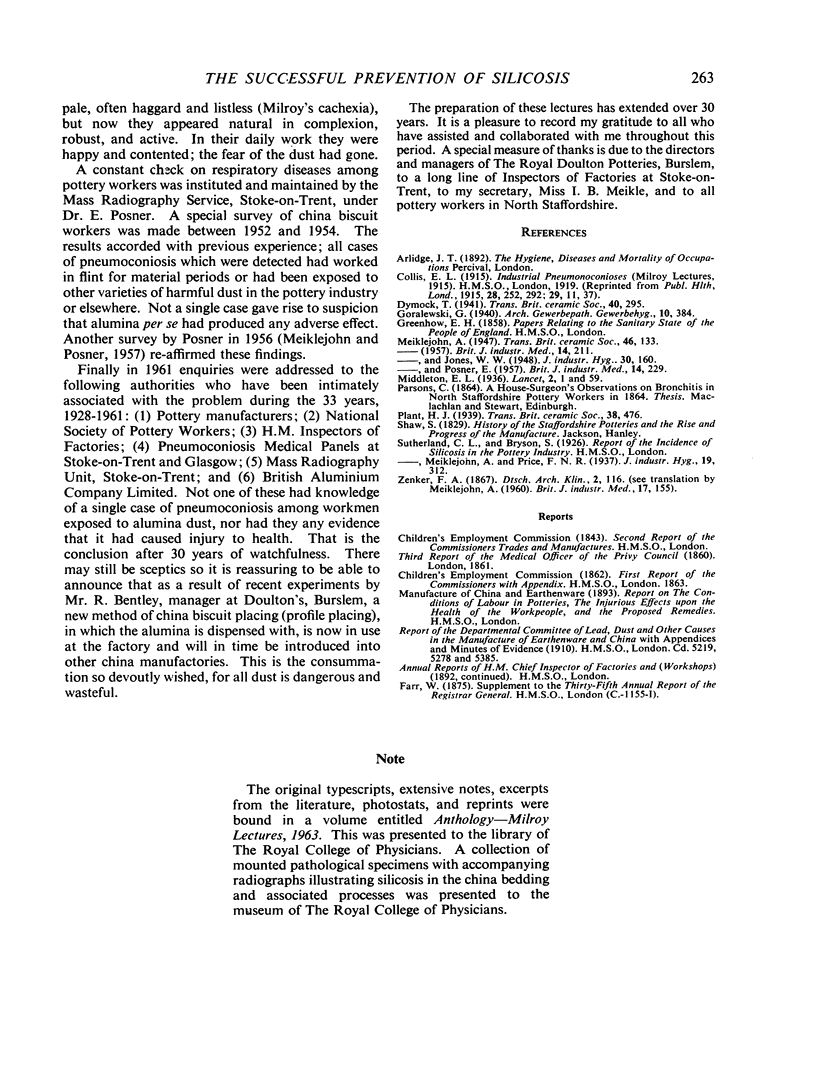Abstract
The pottery industry in North Staffordshire was established towards the close of the seventeenth century. At first the wares which were made from local clays were rather crude but manufacturers unremittingly sought to improve the quality of their productions by the addition of other ingredients to the clays. In 1720 calcined powdered flint was introduced into the clay body. Six years later Benson described the serious effects of the dust on the lungs of millmen engaged in dry flint crushing. Later the disease became very prevalent not only among millmen but among workmen, males and females, in a wide range of pottery occupations and processes. Popularly the disease was known as potters' asthma or potters' rot, which was later identified scientifically as silicosis.
Among the workmen most seriously affected were men engaged in china biscuit bedding and placing and women in the china biscuit warehouse. The risk arose from bedding the ware in flint for the first or so-called biscuit firing. In the course of firing some flint adhered to the surface of pieces and this had to be scoured or brushed off to ensure a clean surface for glazing.
The manufacturers experimented to discover a suitable substitute for bedding flint. In due course it was proved that calcined alumina fulfilled all the practical requirements. This success immediately raised the question as to whether or not alumina was free from any risk to the health of workmen. The problem was investigated by a survey of furnacemen who had been seriously exposed for many years to the inhalation of alumina in the manufacture of aluminium. The research team concluded that alumina was safe. Thereafter manufacturers progressively substituted alumina for flint. At first this action was voluntary but it was made statutory in 1947.
Vigilant supervision of alumina workers in potteries and aluminium works was maintained between 1936 and 1962; the original findings as to the safety of alumina were confirmed.
During this period the firm of Doultons, where alumina was first introduced, experimented with firing china biscuit ware in tunnel ovens by a method in which the alumina is dispensed with. The method, profile placing, is now established and should in due course extend to all china manufactories.
Full text
PDF